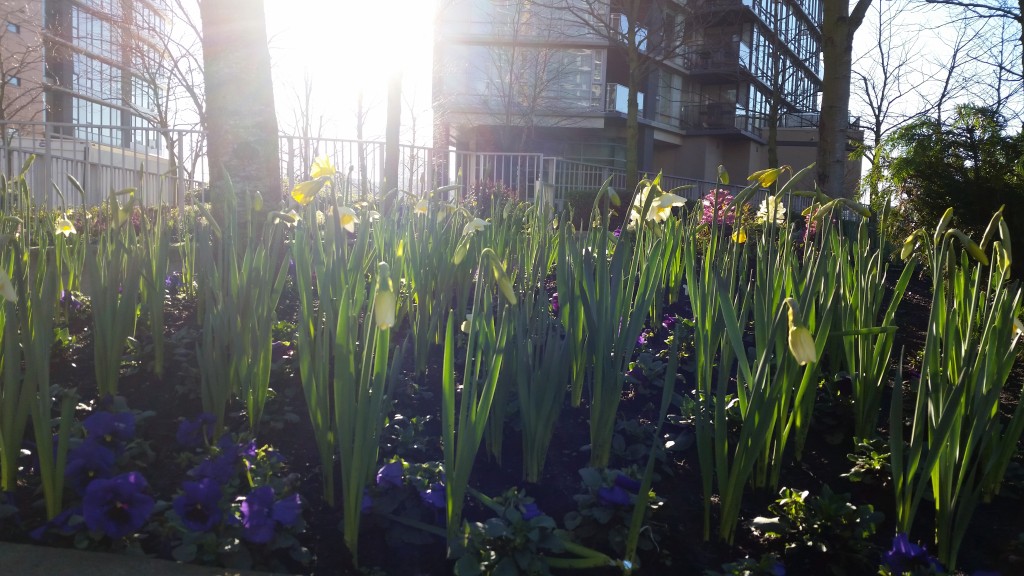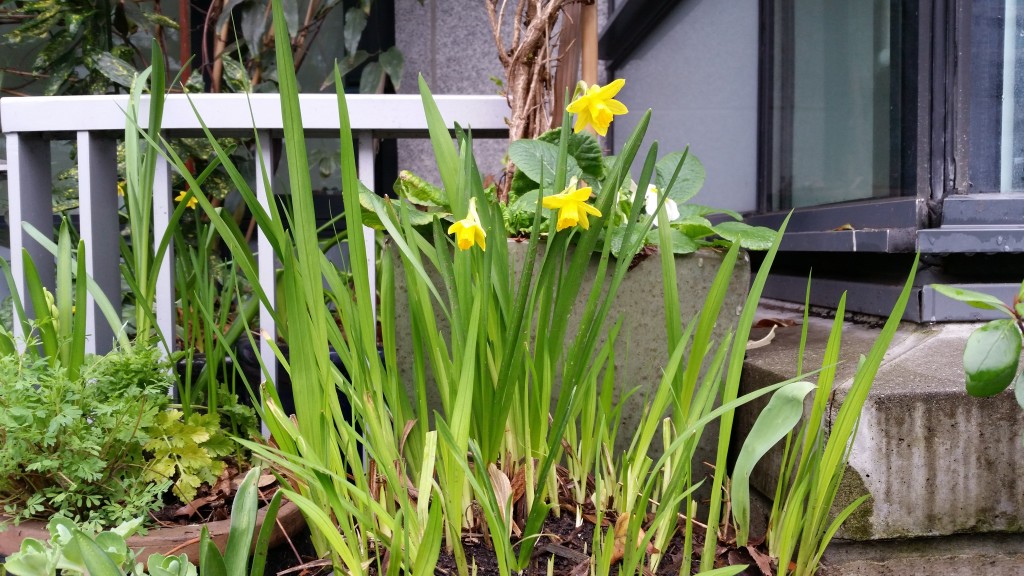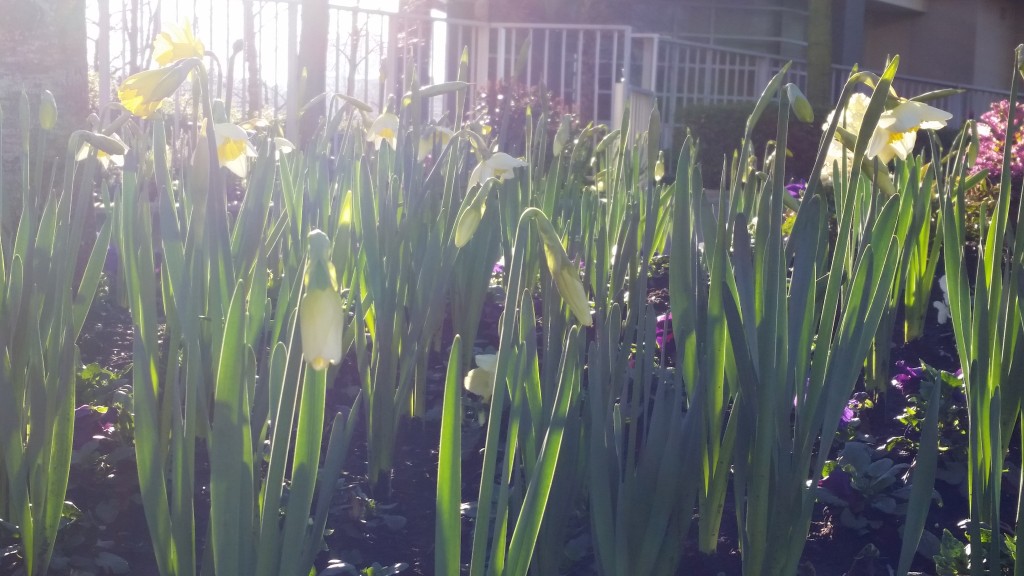Early spring (or February in Vancouver) is the time to spot Narcissus pseudonarcissus (commonly known as the daffodil) in flower. Nothing heralds the beginning of Spring quite like seeing these happy little flowers nod in the dappled sunlight.

The daffodils on my front porch flowered on February 12 this year- a new record!

Homeopathic uses of Narcissus pseudonarcissus
All Narcissus species, including daffodils, contain the alkaloid poison lycorine and should never be eaten. Fortunately, in homeopathy, we can potentize Narcissus pseudonarcissus to make it safe and non-toxic for use.
The mother tincture is made of the unexpanded blossom-buds, stem, leaf, and flower of the narcissus flower before it is prepared into the different potencies.
Prominent English homeopath, Dr. John Henry Clarke (1853 – 1931) in his ‘A Dictionary of Practical Materia Medica’ (1900) lists that the principal uses of Narcissus pseudonarcissus are for bronchitis, cough, coryza, and diarrhea. Indications for use would include a frontal (sinus) headache with severe coryza and a continuous cough.
Dr. William Boericke (1849 – 1929) also lists Narcissus pseudonarcissus as a remedy to consider for nausea followed by violent vomiting and diarrhea in his ‘Pocket Manual of Homoeopathic Materia Medica & Repertory (1901)
Although this remedy has been in the homeopathic materia medica for well over a hundred years, it is still remains relatively unknown.


